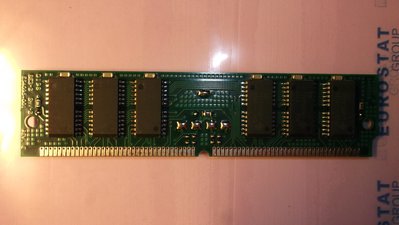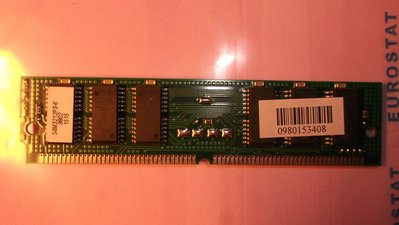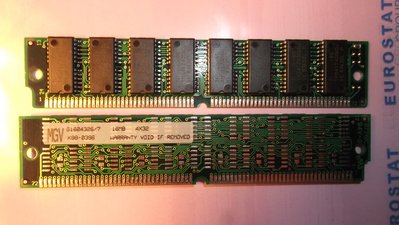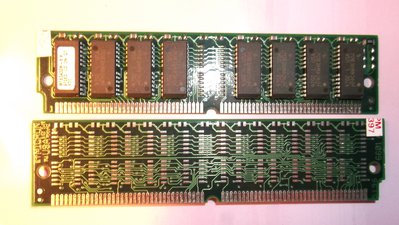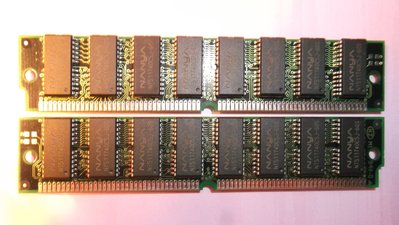First post, by kumijorma
The problem
I am currently building a 486-computer and decided to install two 16 MB memory modules. The motherboard manual only says that it is possible to install two 16 MB 72-pin SIMMs with 80 ns (or less) DRAM-speed.
All the memory modules don't have stickers and identifying the type of memory modules can be difficult. There are also noticeable performance differences in different memory modules, even though the specs are the same (16 MB, 72-pins, 60 ns).
I have attached images of the memory modules I currently have (below). I have one 16 MB memory module that is fast and working fine. I have two 16 MB memory modules that perform noticeable worse than the one I mentioned earlier. I have also tested two other sets ot 2x 16 MB memory modules, but they don't work at all on my 486. (The were taken (fully working) from old Pentium-computers.)
(Of course I would buy another memory module of the kind of one I have, if it was available.)
So, I am asking for recommendations for good RAM for my 486-computer - or help to identifying missing specs that I need for looking good memory modules.
So, all I know that my computer supports 2x 16 MB with 72-pins and 60 ns DRAM-speed. The fast module I have, may be a parity-module. I have heard that some of the modules with 6x chips on both sides are parity-modules, but I'm not sure about this. There may be other spec-related things I haven't noticed from my memory modules.
The reason I want 32 MB of RAM is that I use some software under Windows 3.11 that get benefits having more than 16 MB of RAM.
Other questions
My 486-computer also has 4 MB with 70 ns DRAM-speed of onboard RAM. If I install two 60 ns memory modules to my computer, is it better to disable onboard RAM for performance?
Can you recommend me the best settings for shadow RAM and memory hole at 15 - 16 MB -options in the BIOS?
I have the following cards in the ISA-slots: Diamond SpeedStar 64 2 MB, Sound Blaster 16 WavEffects and WinBond W89C904AXF-network card.
Thanks.
Images of the memory modules:
